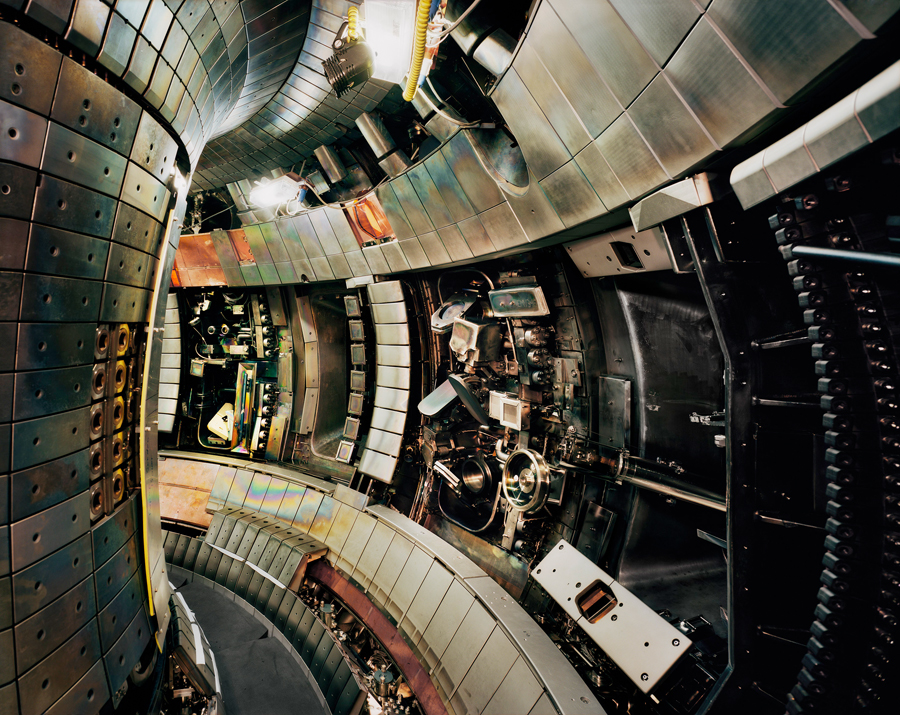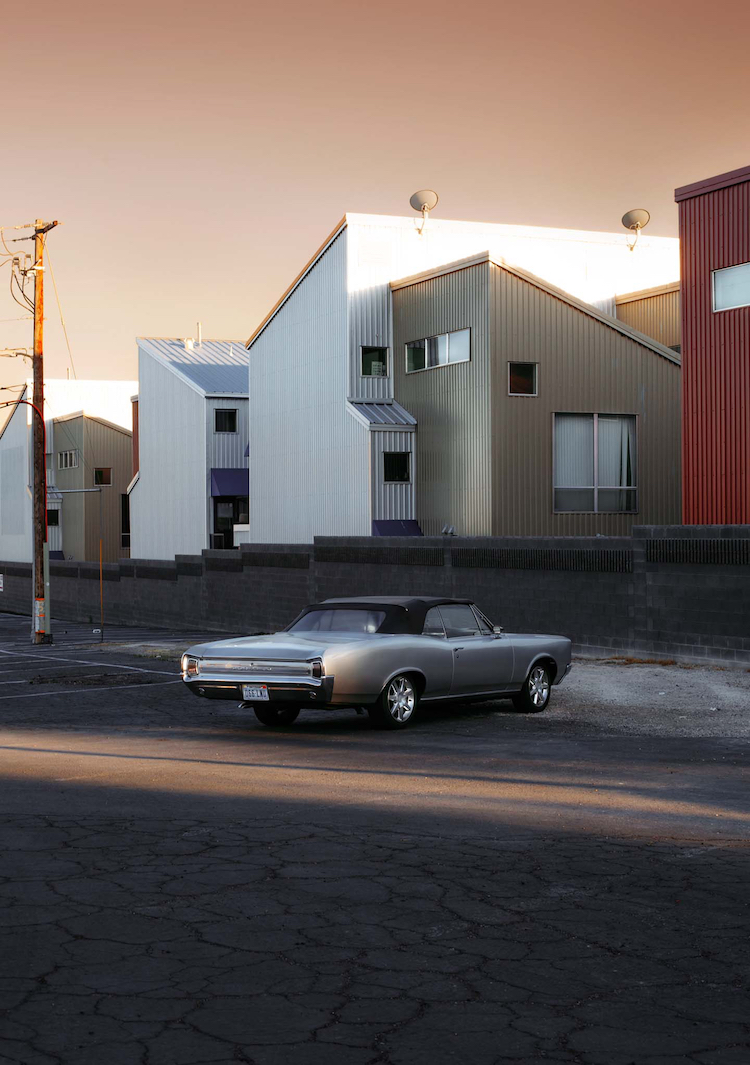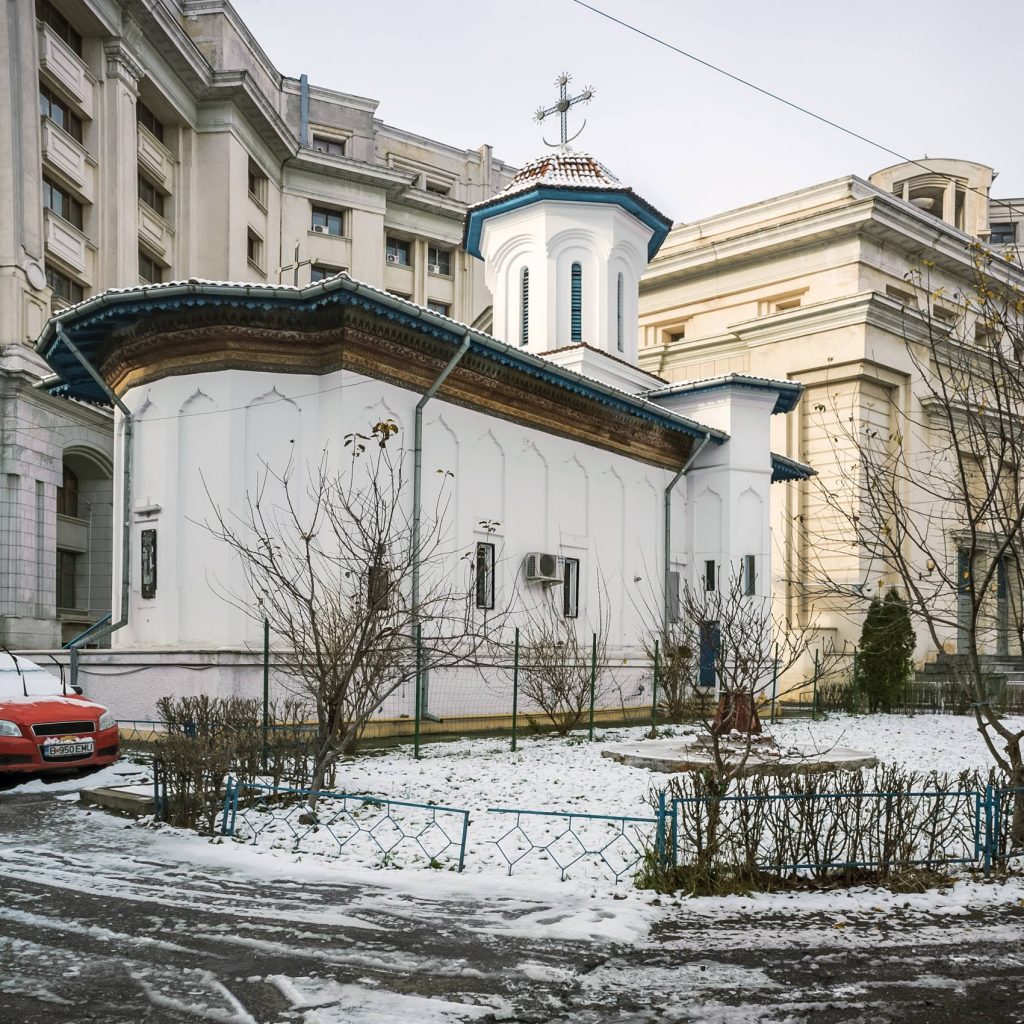
Annunciation Church of the »Retreat of the Nuns«, Bucharest, Anton Roland Laub, series Mobile Churches, 2013-2017 © Anton Roland Laub
Anton Roland Laub
Mobile Churches
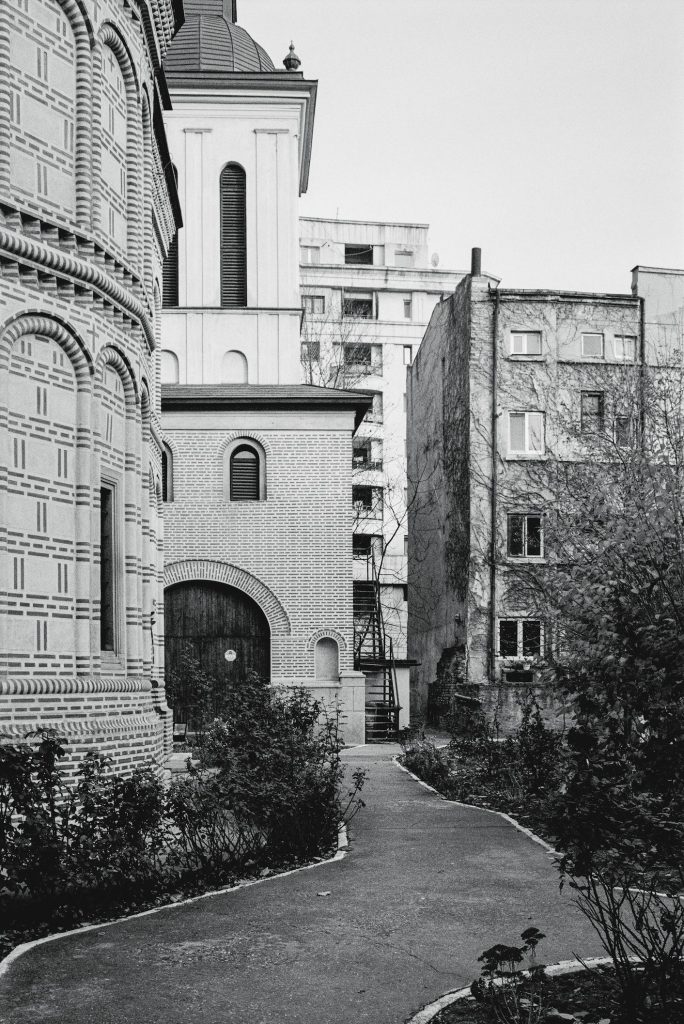
Saint Nicholas Church of the Monastery »Mihai Vodă«, Bucharest, Anton Roland Laub, series Mobile Churches, 2013-2017 © Anton Roland Laub
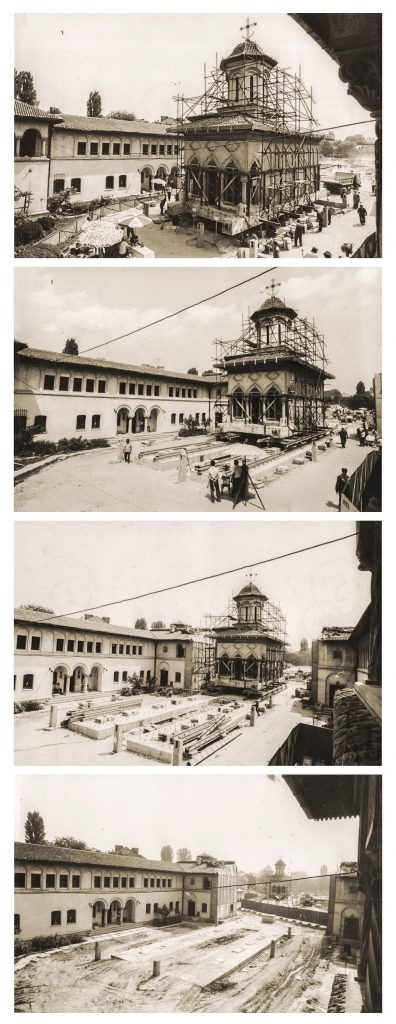
Displacement of the Annunciation Church of the »Retreat of the Nuns«, Bucharest 1982 Courtesy Dr. Ing. Eugeniu Iordăchescu
Publication:
Kehrer Verlag
Edited by Sonia Voss
Texts by Sonia Voss and Lotte Laub
Designed by Minami Shimakage
Hardcover 16,5 x 22,7 cm, 144 pages
40 color, 11 duotone and 8 B&W reproductions
German / French / English
//
Anton Roland Laub, born and grown in Bucharest, moved to Germany in 2000 where he studied at the New School for Photography and the Weissensee School of Art in Berlin. Bucharest’s recent history – seen particularly through the prism of urbanism – as well as the stigmata of Ceaușescu’s dictatorship are one of his main focuses as a photographer.
Sonia Voss, curator and author, lives in Paris and Berlin. Latest projects: Anton Roland Laub. Mobile Churches, Rencontres de la Photographie / New Discovery Award, Arles 2018 & Saint-Germain-des-Prés Church / Photo Saint-Germain, Paris 2017, Curators’ Choice, Springer Galerie, Berlin 2018, Déjà Vu. Thibault Brunet. Isabelle Le Minh, Kehrer Galerie, Berlin 2018, Sophie Calle. Beau doublé, Monsieur le marquis !, Musée de la Chasse et la Nature, Paris 2017–2018, Josef Koudelka. Invasion/Exiles/Wall, C/O, Berlin 2017, George Shiras. L’Intérieur de la nuit, Musée de la Chasse et la Nature, Paris 2015–2016.
Lotte Laub obtained her PhD at Friedrich Schlegel Graduate School of Literary Studies, Freie Universität Berlin with the dissertation „Gestalten durch Verbergen. Ghassan Salhabs melancholischer Blick auf Beirut in Film, Video und Dichtung“ (Revealing by Concealing. Ghassan Salhab’s Melancholic Glance at Beirut in Film, Video and Poetry), published 2016 at Reichert Verlag. In 2010, she received a research fellowship from the Orient-Institut Beirut and received an Honors Postdoc Fellowship at the Dahlem Research School, FU Berlin. Previously, she worked at the Martin-Gropius-Bau and is currently Program Manager at Zilberman Gallery–Berlin.
Descriptions
In addition to Bucharest’s seven displaced churches, twenty other churches as well as three monasteries and three synagogues were destroyed under Ceaușescu’s communist regime. They thus shared the fate of several churches in the GDR, such as the Reconciliation Church, the St. George’s Church and the St. Peter’s Church in Berlin-Mitte as well as others in East Berlin, Rostock and Leipzig. Both the Ceaușescu dictatorship and the SED were ideologically and politically opposed to the Church. The churches were the main victims of both governments’ ambitious urban planning policies as well as their aspiration to intervene in the collective memory of their peoples and to destroy their familiar symbols.
In Bucharest, moving buildings on rails was a particularly surprising solution. From 1982 to 1989, seven churches were therefore saved through a complex technical procedure. But the intention of banishing these churches from their historical and cultural context cannot be overlooked. By being separated from their spatial environment, they have largely lost their symbolic dimension. Other religious buildings, such as the Great « Polish » Synagogue, were not displaced but again isolated behind high housing blocks. Current photographs of the churches and the synagogue convey a dreary aspect in a similar way to archival photographs of the Reconciliation Church that show the building, which was eventually blown up in 1985, confined to the death strip between the ‘border wall’ and the ‘hinterland wall’.
The reasons that led to the destruction of churches in the GDR are today the subject of historical research. In Berlin, a chapel of modest proportions has been built on the foundations of the former Reconciliation Church. In Romania, the arbitrariness of Ceaușescu’s decisions remains the sole explanation for the sacrificed churches, while in Bucharest a monumental cathedral is currently being built on a scale that is set to compete with Ceaușescu’s pharaonic House of the Republic, which had previously justified the destruction of the city.
Shortlisted for the Luma Rencontres Dummy Book Award, Les Rencontres de la Photographie, Arles 2017 and for the Unseen Dummy Award, Unseen, Amsterdam 2017.
Info
- + By: wp-admin
- + In: Books


